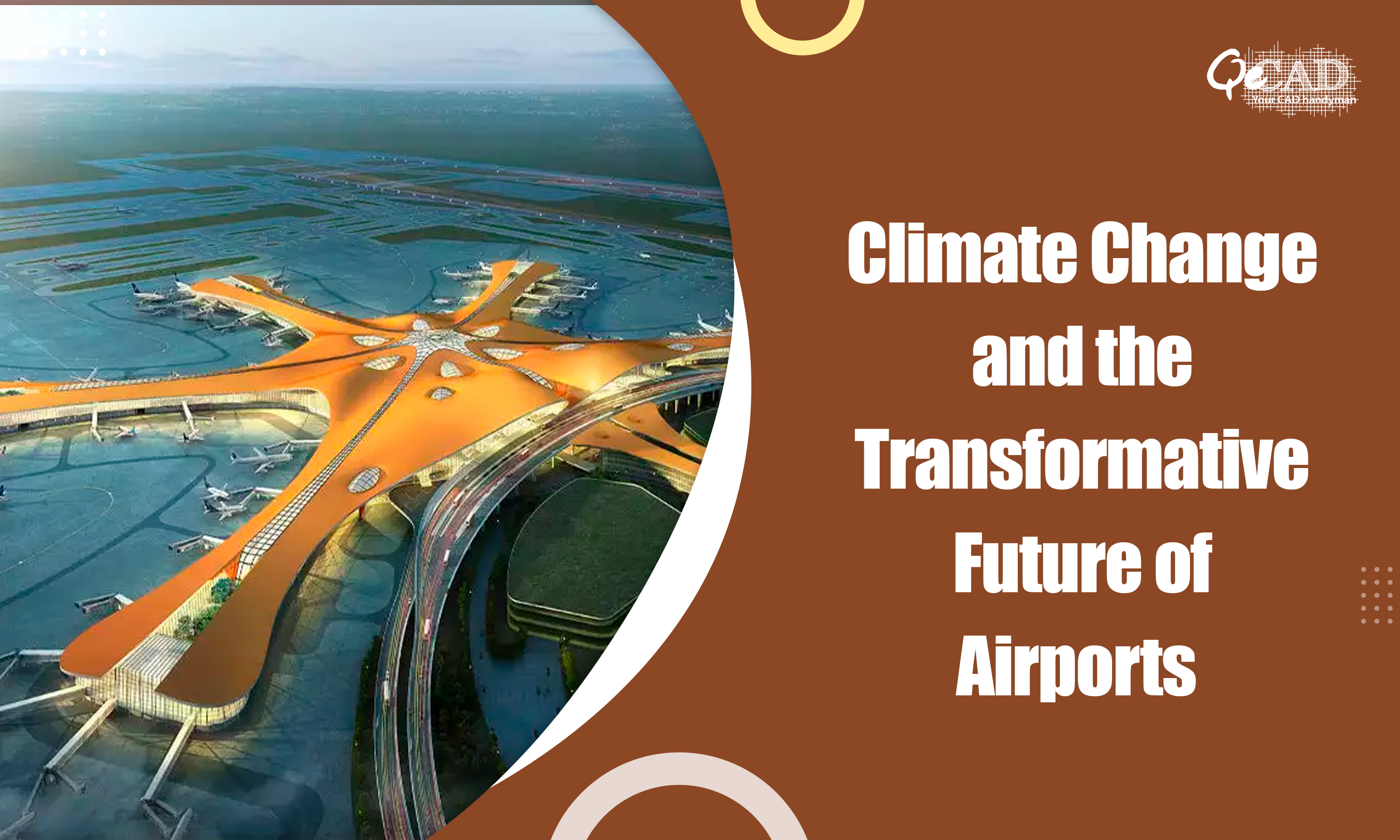
Introduction
Airports, the bustling hubs of global connectivity, have long been the lifeblood of our interconnected world. However, as we stand on the cusp of a new era, the future of airports faces a formidable challenge—climate change. The impact of a warming planet is not limited to rising sea levels and extreme weather events; it extends its reach to the very infrastructure that powers our global mobility.
In this article, we get into the intricate interplay between climate change and airport infrastructure planning, exploring the measures being taken to ensure the sustainability and resilience of these vital transportation nodes.
The Changing Climate Landscape
Climate change, driven by anthropogenic activities, is ushering in a new normal characterized by rising temperatures, unpredictable weather patterns, and increased frequency of extreme events. For airports, these changes pose a dual threat—direct impacts from weather-related incidents and the need to adapt to a world that demands greater sustainability in every facet of life.
1. Extreme Weather Events and Airport Vulnerability
Airports face growing vulnerability due to the rising occurrence and severity of extreme weather phenomena, including hurricanes, floods, and heat waves. Coastal airports, in particular, face the menace of rising sea levels, threatening both infrastructure and operations. Hurricane-prone regions, like those in the Atlantic, are witnessing a surge in powerful storms that can disrupt airport functions and cause substantial damage.
2. Temperature Extremes and Aviation Operations
Rising global temperatures also impact aviation operations. High temperatures can affect aircraft performance, leading to weight restrictions and reduced take-off capabilities. As heatwaves become more common, airports in warmer regions may need to invest in infrastructure modifications, such as longer runways or enhanced cooling systems, to accommodate the changing operational dynamics.
Infrastructure Planning in the Face of Climate Change
Recognizing the imminent threat posed by climate change, airports worldwide are taking proactive measures to ensure the sustainability and resilience of their infrastructure. From innovative design concepts to the integration of renewable energy sources, the future of airports is being shaped by a commitment to environmental responsibility.
1. Green Airport Design and Renewable Energy Integration
Modern airports are embracing green design principles with 6D BIM Services, incorporating sustainable materials, and maximizing energy efficiency in their structures. The integration of renewable energy sources, such as solar panels and wind turbines, is becoming increasingly common. Airports are transforming into eco-friendly complexes that generate clean energy, minimizing their carbon footprint and actively participating in the battle against climate change.
2. Climate-Resilient Infrastructure
To withstand the impact of extreme weather events, airports are investing in climate-resilient infrastructure. Elevated runways, flood barriers, and reinforced terminals are just a few examples of the measures being implemented to enhance resilience. Forward-looking airports are conducting comprehensive risk assessments to identify vulnerabilities and develop adaptive strategies to mitigate potential damage.
3. Technological Innovations for Sustainable Operations
The future of airports lies in technological innovations that prioritize sustainability. Electric ground support equipment, energy-efficient lighting systems, and smart building technologies and tools like BIM for Infrastructure are transforming the way airports operate. Sustainable aviation fuels are also gaining traction as a viable alternative to traditional jet fuels, reducing the environmental impact of air travel.
Collaboration and Global Initiatives
Addressing the challenges posed by climate change requires a collaborative effort on a global scale. Airports, airlines, governments, and environmental organizations are coming together to develop and implement strategies that promote sustainability and resilience in the aviation sector.
1. International Air Transport Association (IATA) Initiatives
Organizations like IATA are at the forefront of promoting sustainable aviation practices IATA’s Climate Action Roadmap delineates a thorough plan for the aviation sector to attain net-zero carbon emissions by 2050. The strategy encompasses the advancement and application of innovative technologies, the adoption of sustainable aviation fuels, and the integration of more streamlined operational practices.
2. Government Policies and Regulations
Governments around the world are enacting policies and regulations to incentivize the adoption of sustainable practices in the aviation industry. From emissions reduction targets to financial incentives for eco-friendly initiatives, these measures are driving airports to prioritize climate resilience in their long-term planning.
Conclusion
As we gaze into the future of airports, it is clear that the challenges posed by climate change are not insurmountable. Through a combination of innovative design, technological advancements, and global collaboration, airports are adapting to the evolving climate landscape. The future promises airports that are not only hubs of connectivity but also beacons of sustainability and resilience, ensuring that the skies remain open for generations to come.
